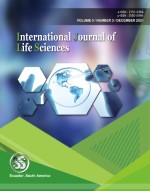Psychological impact of COVID-19 on the sports population from Santiago
Keywords:
COVID-19, economic and social order, population, psychological impact, sportAbstract
COVID-19 has caused great effects on the economic and social order of all the countries involved, it is recognized the great psychological impact that this terrible pandemic has brought with it in the general population. Athletes are not exempt from these effects, so the research was determined to evaluate such impacts on athletes from Santiago to implement psychological intervention actions that would minimize such consequences. The study was carried out in 926 athletes belonging to all sports categories and age groups, using three questionnaires and the thematic drawing technique. The surveyed athletes did not show great psychological effects; however, the most recurrent manifestations were tension, sadness, constant worry, fear and sleep disturbances. Action research was carried out in which immediate solutions were offered to the problems and demands diagnosed.
Downloads
References
Brooks, S. K., Webster, R. K., Smith, L. E., Woodland, L., Wessely, S., Greenberg, N., & Rubin, G. J. (2020). The psychological impact of quarantine and how to reduce it: rapid review of the evidence. The lancet, 395(10227), 912-920. https://doi.org/10.1016/S0140-6736(20)30460-8
Center for Sport and Human Rights. (2020). Overview of the impact of the COVID-19 pandemic on children in sports. Under Coronavirus.
Costanza, R. (1999). The ecological, economic, and social importance of the oceans. Ecological economics, 31(2), 199-213. https://doi.org/10.1016/S0921-8009(99)00079-8
Doherty, A. (2013). Investing in sport management: The value of good theory. Sport Management Review, 16(1), 5-11. https://doi.org/10.1016/j.smr.2011.12.006
Gill, J. A., Norris, K., & Sutherland, W. J. (2001). Why behavioural responses may not reflect the population consequences of human disturbance. Biological Conservation, 97(2), 265-268. https://doi.org/10.1016/S0006-3207(00)00002-1
Jaenes, J. C., García-González, P., González-López, J., Costa-Agudo, M., García-Ordóñez, J., & Mehrsafar, A. (2020). Is training a moderator of emotional reactions in confinement by COVID-19 in high-performance athletes?. Revista Andaluza de Medicina del Deporte, 13(3).
James, J. D. (2011). Attitude toward advertising through sport: A theoretical framework. Sport Management Review, 14(1), 33-41. https://doi.org/10.1016/j.smr.2009.12.002
Kim, S. W., & Su, K. P. (2020). Using psychoneuroimmunity against COVID-19. Brain, behavior, and immunity, 87, 4-5. https://doi.org/10.1016/j.bbi.2020.03.025
Martínez, M. L., Intralawan, A., Vázquez, G., Pérez-Maqueo, O., Sutton, P., & Landgrave, R. (2007). The coasts of our world: Ecological, economic and social importance. Ecological economics, 63(2-3), 254-272. https://doi.org/10.1016/j.ecolecon.2006.10.022
McDuff, D., Iannone, V., Zimet, D. and Garvin, M. (2020). Youth Sports and the Covid-19 Pandemic.
Minds, Y. (2020). Coronavirus: impact on young people with mental health needs. Retrieved May, 21, 2020.
Montoya, C., González, L., Pulido, S., Atehortúa, L., & Robledo, S. M. (2020). Identification and quantification of limonoid aglycones content of Citrus seeds. Revista Brasileira de Farmacognosia, 29, 710-714.
Navarro-Soria, I., Real-Fernández, M., Juárez-Ruíz de Mier, R., Costa-López, B., Sánchez, M., & Lavigne, R. (2021). Consequences of Confinement by COVID-19 in Spain on Anxiety, Sleep and Executive Functioning of Children and Adolescents with ADHD. Sustainability 2021, 13, 2487.
Piedra, J. (2020). Redes sociales en tiempos del COVID-19: el caso de la actividad física. Sociología del deporte, 1(1), 41-43.
Ramírez-Ortiz, J., Fontecha-Hernández, J., & Escobar-Córdoba, F. (2020). Effects of social isolation on sleep during the covid-19 pandemic.
Schuit, A. J., van Loon, A. J. M., Tijhuis, M., & Ocké, M. C. (2002). Clustering of lifestyle risk factors in a general adult population. Preventive medicine, 35(3), 219-224. https://doi.org/10.1006/pmed.2002.1064
Solórzano, D. A. N., & Zambrano, S. V. P. (2020). The activities of rural women in home economy. International Journal of Life Sciences, 4(2), 1-8. https://doi.org/10.29332/ijls.v4n2.427
Sulistiawati, N. P. A., Kartini, L., & Yuliartini, M. S. (2017). Identification of development phases and changes shoots flowering orange siam plants. International Journal of Life Sciences, 1(2), 28-38. https://doi.org/10.21744/ijls.v1i2.37
Temsah, M. H., Al-Sohime, F., Alamro, N., Al-Eyadhy, A., Al-Hasan, K., Jamal, A., ... & Somily, A. M. (2020). The psychological impact of COVID-19 pandemic on health care workers in a MERS-CoV endemic country. Journal of infection and public health, 13(6), 877-882. https://doi.org/10.1016/j.jiph.2020.05.021
Tetro, J. A. (2020). Is COVID-19 receiving ADE from other coronaviruses?. Microbes and infection, 22(2), 72-73. https://doi.org/10.1016/j.micinf.2020.02.006
Véliz, A., Moreno, G., Villasana, P. (2020). Perception of Chilean athletes regarding the emotional effects of social distancing. Community and Health.
Wang, C., Pan, R., Wan, X., Tan, Y., Xu, L., Ho, C. S., & Ho, R. C. (2020). Immediate psychological responses and associated factors during the initial stage of the 2019 coronavirus disease (COVID-19) epidemic among the general population in China. International journal of environmental research and public health, 17(5), 1729.
Published
How to Cite
Issue
Section
Copyright (c) 2021 International journal of life sciences

This work is licensed under a Creative Commons Attribution-NonCommercial-NoDerivatives 4.0 International License.
Articles published in the International Journal of Life Sciences (IJLS) are available under Creative Commons Attribution Non-Commercial No Derivatives Licence (CC BY-NC-ND 4.0). Authors retain copyright in their work and grant IJLS right of first publication under CC BY-NC-ND 4.0. Users have the right to read, download, copy, distribute, print, search, or link to the full texts of articles in this journal, and to use them for any other lawful purpose.
Articles published in IJLS can be copied, communicated and shared in their published form for non-commercial purposes provided full attribution is given to the author and the journal. Authors are able to enter into separate, additional contractual arrangements for the non-exclusive distribution of the journal's published version of the work (e.g., post it to an institutional repository or publish it in a book), with an acknowledgment of its initial publication in this journal.
This copyright notice applies to articles published in IJLS volumes 4 onwards. Please read about the copyright notices for previous volumes under Journal History.















